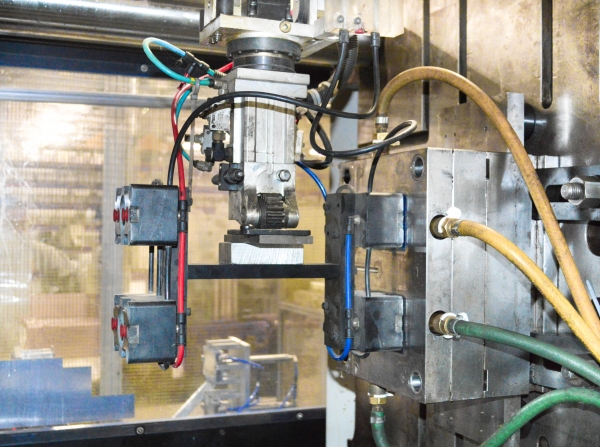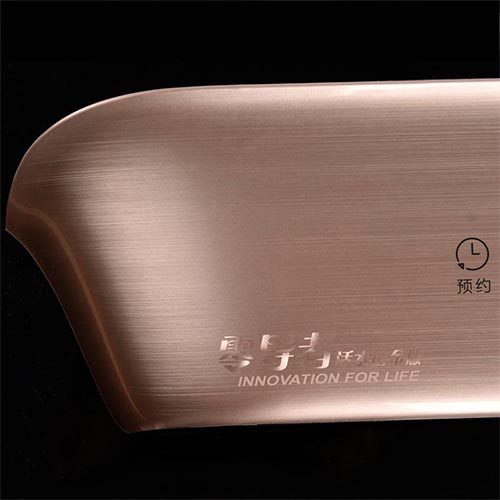Understanding In-Mold Decorations: Strategies, Trends, and Finest Practices for Optimal Outcomes
In the realm of manufacturing, the art of in-mold decorations stands as a crucial element of product style and production. In-Mold Decorations. By delving into the strategies, trends, and best techniques that underpin successful in-mold decor processes, organizations can open a realm of opportunities that not just boost the aesthetic allure of their products yet also enhance manufacturing efficiency and reinforce consumer involvement.
Product Option
Product option is a vital facet of grasping in-mold designs, as it directly influences the high quality and toughness of the last item. When picking materials for in-mold designs, it is important to take into consideration aspects such as compatibility with the molding procedure, the desired visual end result, and the ecological conditions the product will certainly face.
Furthermore, the selected material should possess good adhesion residential properties to guarantee that the decoration adheres firmly to the substratum throughout the molding procedure. Bond in between the product and the decor is important for preventing delamination and ensuring long-lasting aesthetic allure. Furthermore, products with high warm resistance are liked for in-mold decors, specifically for products that will be revealed to raised temperatures throughout their lifecycle. By very carefully selecting the appropriate product for in-mold decorations, suppliers can enhance the overall top quality and longevity of their products, fulfilling the expectations of both end-users and clients.
Design Advancement
An important consider advancing the field of in-mold designs is the constant expedition and implementation of style advancement strategies. Layout development plays a crucial function in improving the visual charm, functionality, and general high quality of items manufactured using in-mold decoration processes. By including innovative style elements, producers can distinguish their products on the market, draw in consumers, and remain in advance of competitors.
Among the key aspects of design development in in-mold designs is the assimilation of complex patterns, textures, and graphics that were formerly challenging to achieve with conventional decoration techniques. Advanced modern technologies such as 3D printing and electronic design tools make it possible for designers to create complicated and thorough designs that can be flawlessly moved onto shaped components. Furthermore, making use of vivid shades, metal surfaces, and special impacts like gloss or matte appearances can further raise the visual charm of in-mold enhanced products.
Moreover, style advancement prolongs beyond visual appeals to incorporate useful enhancements such as ergonomic shapes, integrated functions, and adjustable components that accommodate certain individual requirements. By embracing layout technology, makers can open brand-new possibilities for customization, item, and creative thinking distinction in the affordable landscape of in-mold decors.
Manufacturing Effectiveness
Effective manufacturing processes are crucial for translating the innovative layouts developed in the field of in-mold decors into high-quality ended up items that meet market needs and consumer expectations. In the realm of in-mold decors, production effectiveness encompasses different vital facets that add to the total success of the manufacturing procedure. One critical element is the optimization of here mold and mildew layout and tooling to ensure smooth and specific decoration transfer onto the end product. By fine-tuning mold and mildew arrangements and buying high-quality tooling materials, manufacturers can enhance performance and uniformity in production.
Furthermore, executing automation and robotics in the assembly line can considerably boost effectiveness by enhancing recurring tasks and minimizing the margin of mistake. Automation not only increases the manufacturing process yet also improves precision and repeatability, resulting in a much more high-quality and consistent end item. Furthermore, taking on Continued lean production concepts, such as just-in-time supply monitoring and waste decrease techniques, can additionally improve production performance by lessening downtime and maximizing resource application. Generally, a holistic technique to manufacturing efficiency is paramount in maximizing the potential of in-mold decoration strategies and achieving optimal lead to the competitive market landscape.
Quality Assurance Measures
What are the essential methods for guaranteeing rigid top quality control procedures in the realm of in-mold decors? Quality control steps are extremely important in in-mold decor procedures to make certain the production of top notch and remarkable ended up items.
Utilizing innovative innovations such as automatic inspection systems can also improve the quality assurance process by giving dependable and accurate information for evaluation. These systems can identify flaws that might be missed by manual assessments, thereby enhancing general product top quality and uniformity.

Regular training and development programs for staff members associated with the in-mold decor procedure can also add to preserving top quality standards. By educating personnel on best techniques, top quality assumptions, and the importance of focus to detail, business can foster a society of top quality awareness throughout the organization.
Consumer Appeal
To enhance the marketability of in-mold design products, understanding and catering to consumer choices play a crucial function in identifying their allure and success. Using customization alternatives such as personalized designs, shade variants, and textural components can substantially improve the allure of in-mold design items.

Conclusion
In-mold decors supply a flexible and reliable means to enhance item appearances. By meticulously picking products, welcoming cutting-edge designs, optimizing manufacturing procedures, executing quality assurance actions, and focusing on consumer allure, manufacturers can achieve optimum results. It is critical for business to consistently adjust and boost their approaches to remain competitive on the market. In-Mold Decorations. Mastering in-mold designs calls for an all natural technique that considers all facets of the production process to make sure success.
In the world of production, the art page of in-mold designs stands as a crucial aspect of product layout and manufacturing. Layout development plays a crucial function in boosting the visual appeal, performance, and total top quality of products produced utilizing in-mold design processes.One of the key aspects of style technology in in-mold decorations is the assimilation of elaborate patterns, textures, and graphics that were formerly challenging to attain with traditional design methods.Efficient manufacturing processes are vital for translating the innovative styles created in the area of in-mold decorations into high-grade completed items that satisfy market needs and customer assumptions. Using modification choices such as customized styles, shade variants, and textural components can dramatically improve the allure of in-mold decor items.